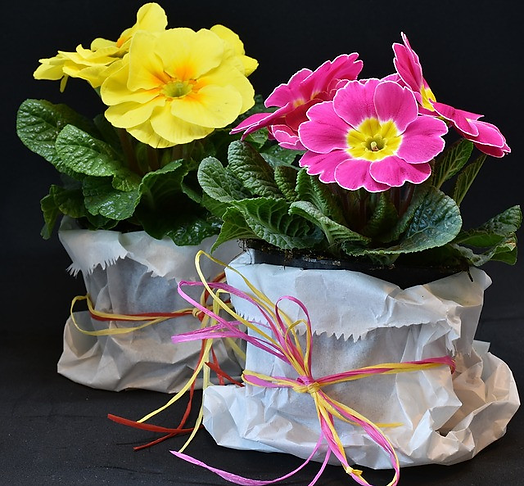
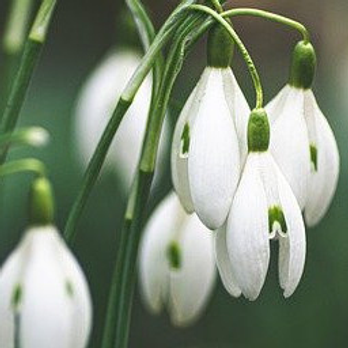
Nothing is a more sure sign that spring is just around the corner than observing snowdrops in the snow or tiny yellow and purple crocuses popping their heads through the ground. These types of flowers originate from bulbs. But what about other perennials? Learn about some early spring blooming perennials and see how and when to plant them to bring you joy this spring.
(Some of the links within this post are affiliate links on which I receive a small compensation for the sale of certain items.)
(As an Amazon Associate I earn from qualifying purchases.)
Early Spring Blooming Perennials
Perennials are welcoming in early spring. Since they come up every year without much fuss, they are wonderful to have in the garden for instant beauty and a pick-me-up when you think winter will never end. To have continuous blooms throughout the growing season, refer to Continuous Blooming Perennials.
Examine your garden and see where you can incorporate some of these perennials into your existing design.
Hellebore/ Lenten Rose
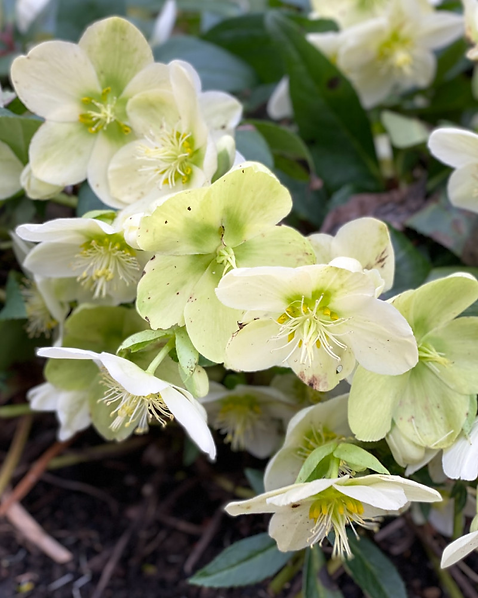
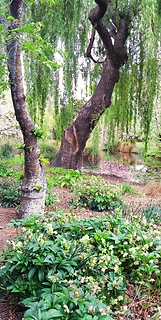
This flower blooms in late winter through spring (February through May). It is a long lasting flower that changes color throughout its blooming season. The hellebore blooms range from shades of whites to pinks to even black!
It is a herbaceous perennial meaning it does not drop its leaves in the winter; an evergreen. The leaves, stems, and flowers are poisonous to pets and humans and are disliked by deer and other flower munching critters.
One plant can produce up to 50 blooms once it matures in a few years! It is compact and easy to grow.
Choose an area where the plant will get dappled sun or partial shade. Under the canopy of high deciduous trees is ideal. Hellebore will even thrive in a fully shaded area. However, if it is too shaded, your plant will not produce as many blooms as it would in partial shade.
===<Purchase Hellebore through Etsy>===
-
Sun Exposure: partial shade, shade
-
Soil Requirements: rich organic, well-drained
-
When to Plant: late winter after the ground has thawed
-
Height: 1 to 2 feet with a similar width
-
Zone: 6-9
Primrose
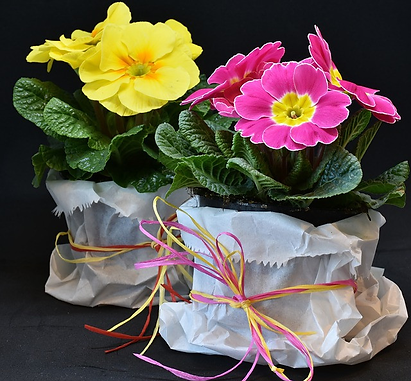
Primrose blooms in early spring. They come in a multitude of colors, heights, and forms. Their name means first; an apropriate name since they are one of the earliest blooming flowers in spring. They are very vigorous plants and will multiply from year to year.
In the Victorian age, primrose signified youth and young love. Currently, throughout many cultures primrose signifies spring, protection, safety and love.
Primrose grows best in an environment that has cool summers. In fact they can bloom all summer long if given partial shade and moist, rich soil.
Their blooms range in color from white to cream, yellow, orange, and pink.
Place the plants about 6 to 12 inches apart and about 4 to 6 inches deep in rich organic soil.
===<Purchase Primrose through Etsy>===
-
Sun Exposure: partial shade; cool summers
-
Soil Requirements: rich organic, well-drained
-
When to Plant: in the fall or early spring
-
Height: 6-20 inches tall; 8 to 20 inches wide (depending on the variety)
-
Zone: 4-8
Creeping Phlox
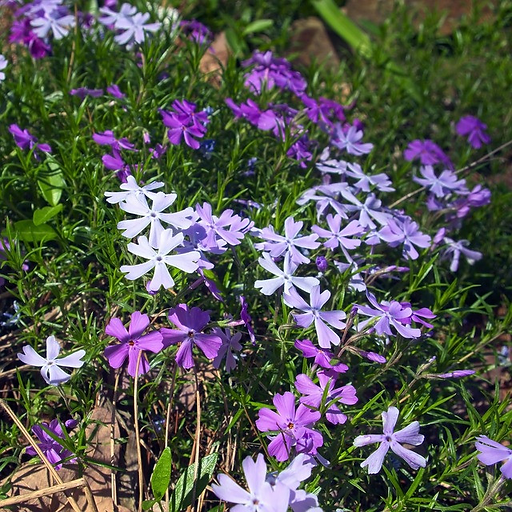
Creeping phlox is a beautiful addition to a hill or other hard to plant area. It’s not fussy about soil and will grow in almost any environment.
It prefers full to partial sun, but will bloom more in full sun. For the best environment, choose an area where it has morning sun followed by an afternoon with dappled shade. Water the plant during times of drought, otherwise just let it be.
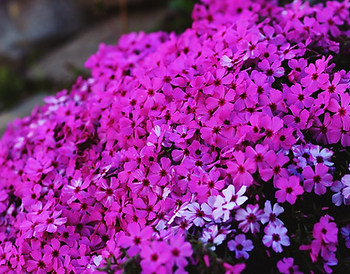
The flower is a small 5 pointed star that comes in colors of white, pink, purple, deep purple, lavender or bluish purple. It blooms profusely for 3 to 4 weeks from mid-spring to early summer.
This flower is creeping and can become leggy. Cut off the leggy stems in late spring after the blooms have faded to promote new growth for the following season. The plant will produce more blossoms on new growth.
-
Sun Exposure: full to partial sun
-
Soil Requirements: not fussy
-
When to Plant: in the spring or fall; after purchasing, plant it as soon as the ground thaws in early spring
-
Height: grows from 4 to 6 inches tall; spreads to 2 feet wide
-
Zone: 3-9
Bleeding Heart
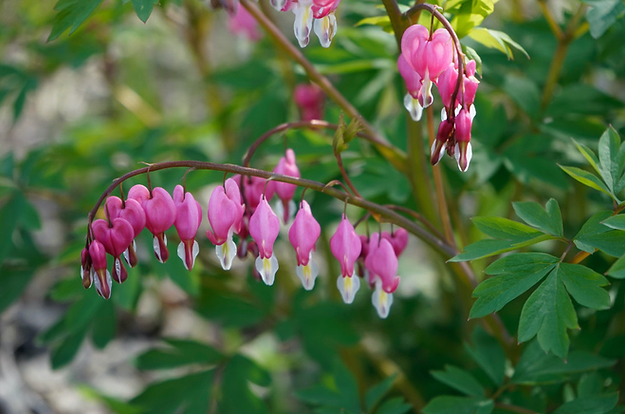
The Bleeding Heart is native to North America. It is sometimes referred to as Turkey Corn, Fringed Bleeding Heart, or Wild Bleeding Heart. They grow naturally in the Appalachian Mountains from North Carolina through southwestern Pennsylvania.
It is a herbaceous perennial plant that has curved, arched stems that produce a splash of heart-shaped flowers. Bleeding Heart has a rhizomatous root system and will spread to two feet. Its roots will survive cold winters, but the leaves will not. However, in milder climates the leaves and flowers will survive the winters.
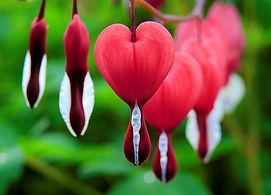
Where winters are more harsh the plant finishes its growth cycle when the temperatures turn warm. The flowers and some leaves will begin to fade and the plant will go dormant.
Cut the stems and leaves back after they have yellowed and dropped. The roots will survive and a new plant will reappear next spring.
You see Bleeding Hearts under a canopy of trees where they receive dappled sunlight.
In the spring they produce beautiful heart shaped flowers in a variety of colors including white, pink, purple, and varieties thereof.
Bleeding hearts prefer moist, organic, well-drained soil.
-
Sun Exposure: partial shade
-
Soil Requirements: rich, moist, organic, well-drained
-
When to Plant: bare rooted and/or entire plants are best planted in early spring after the danger of frost
-
Height: will grow to 2 to 3 feet in approximately 60 days
-
Zone: 2-9
Virginia Bluebells
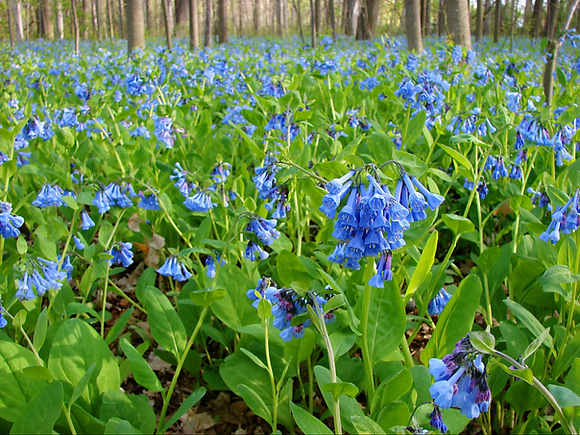
Virginia Bluebells are a true sign that spring has sprung. The flowers begin as pink buds and then later turn blue. These perennials go dormant after they have bloomed.
Cut back the plant after it has turned yellow. Its roots will withstand the summer, fall, and winter and sprout again in the spring.
It prefers dappled sunlight under a canopy of early spring deciduous trees. Virginia Bluebells also thrive in rich, well-drained, evenly moist soil.
Divide the plants in late summer or early fall once they have become dense.
-
Sun Exposure: partial to full shade
-
Soil Requirements: rich, moist, well-drained
-
When to Plant: in early spring or the fall, 12 to 18 inches apart
-
Height: grow to about 2 feet high and 1 foot wide
-
Zone: 3-8
Candytuft
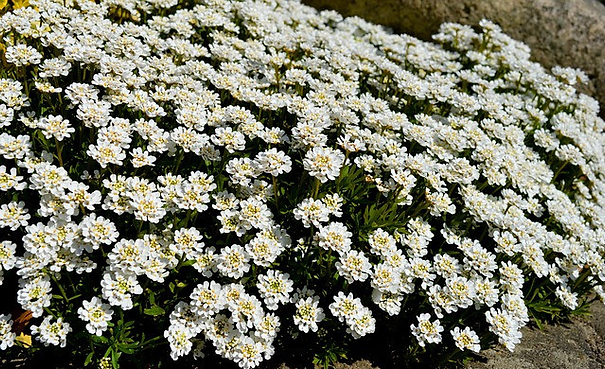
Candytuft is a dainty herbaceous perennial that blooms profusely from March through May. The flowers will mature to a light pink hue. They also come in varieties of pink, red, and purple.
These perennials grow perfectly along a walkway, in a rock garden, or on the side of a wall.
They prefer full sun, but will flower in partial shade.
You can start candytuft from seed indoors 16 to 20 days before the last frost. Once you have seedlings with 2 to 4 sets of leaves, transplant them to a sunny spot with well drained soil. The spot should have at least 5 straight hours of sunlight.
Candytuft is naturally deer and rabbit resistant and moderately salt tolerant.
They can be made to bloom more than once in a season. View the video below to learn how.
===<Purchase Candytuft through Etsy>===
-
Sun Exposure: full sun to partial shade
-
Soil Requirements: prefers sandy well-drained soil
-
When to Plant: from seeds – 16 to 20 days indoors before the last frost; full plant – early fall or mid-April
-
Height: 6-8 inches in height; spread 12 to 35 inches
-
Zone: 3-9
Yellow Alyssum
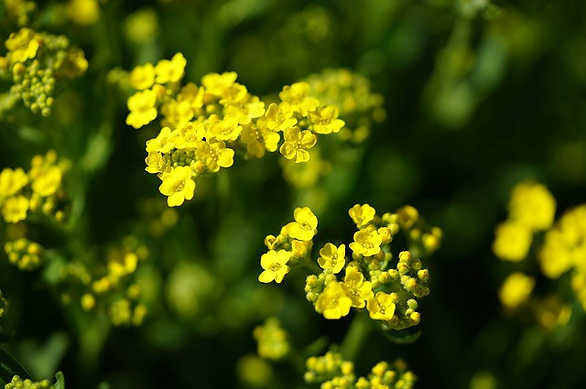
Yellow alyssum is a low growing, mounding perennial that blooms in April. It is also referred to as Basket of Gold. This alyssum has a spreading habit with clusters of yellow flowers on tall stalks.
After it has finished blooming, cut it back by a third to encourage another bloom cycle. After the second bloom, do not cut back again. It will drop seeds to produce more flowers.
Yellow Alyssum can tolerate up to 6 hours of full sun, but prefer part shade in the hottest part of the day.
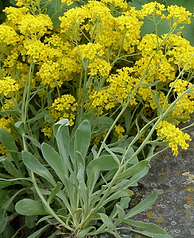
It is a great plant to put on a slope or have draped over rocks in a rock garden. Yellow Alyssum is drought resistant and is not fussy about its soil.
The plant reseeds itself. Once the blossom has turned to seed, shake it so the seeds fall to the ground. You can then cut it back to a third of its size to promote a second set of blossoms.
-
Sun Exposure: full sun to partial shade
-
Soil Requirements: not fussy; any kind but clay
-
When to Plant: start seedlings indoors to be planted outside after last frost; put full plant outdoors after last frost
-
Height: 6 to 12 inches; width up to 18 inches
-
Zone: 3-7
Winter Heath
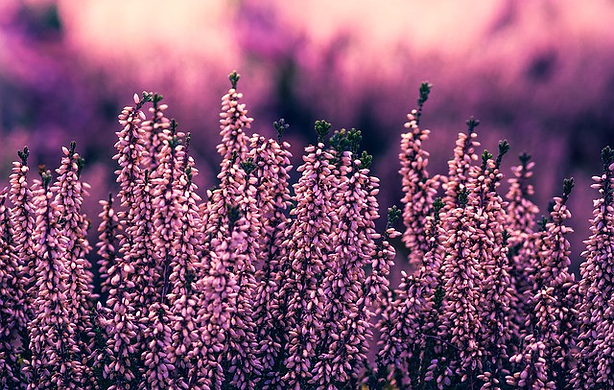
Winter Heath begins blooming in January! What a pleasure to see clusters of purple blossoms on tall stems. It is native to mountainous areas of southern, eastern, and western Europe.
It is a low-growing, mound forming plant and is not fussy. This versatile plant grows naturally in coniferous woodlands, stony slopes, coastal gardens, cottage gardens and containers.
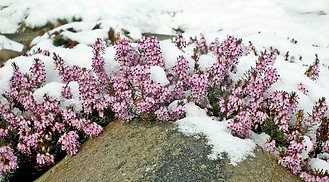
Winter heath is ignored by deer and will attract bees on mild winter days because it produces nectar. It is drought tolerant once established and salt resistant.
It is mostly pest and disease free. This plant looks best when planted in groups.
Winter heath will add interest to your winter garden because it changes color year round. It has pink, white, purple or red blooms.
-
Sun Exposure: full sun
-
Soil Requirements: sandy, acidic, moist, well-drained soil
-
When to Plant: early spring or early fall; dig a hole twice the size of the root ball
-
Height: 6-12 inches; 18 inches wide
-
Zone: 5-7
TIP: When planning your garden, think about where there will be bare spots after these herbaceous perennials die down. You can either plant them next to later blooming plants, or fill in the bare areas with summer annuals such as begonias, impatiens or shade friendly petunias. Also think of color schemes. You want the flowers to complement each other. Refer to Beautiful Shade Garden Ideas.
Final Thoughts/ Early Spring Blooming Perennials
These 8 early blooming flowers will add color and excitement to your garden. Just when you think winter will never end, you will see these beauties peak their heads through the snow just in time for a wonderful pick-me-up.
I hope you enjoyed this article and learned a little something about early spring blooming perennials.
Please comment below and share this articles with family and friends.
Happy Gardening!
Nina

